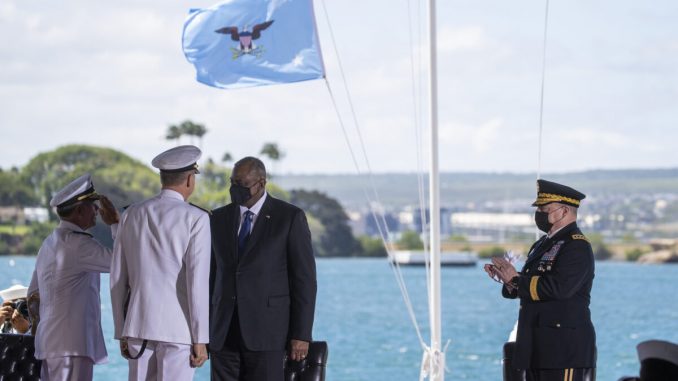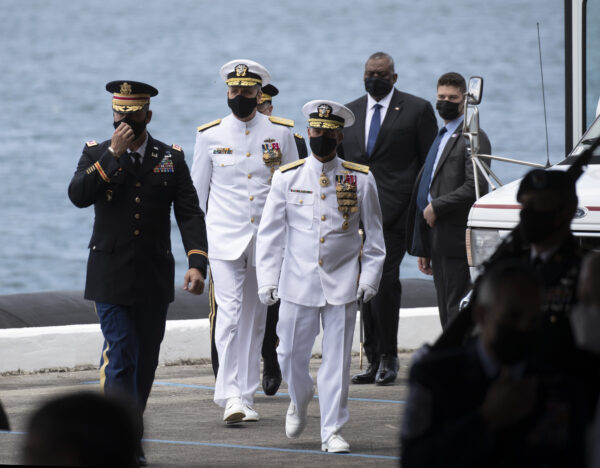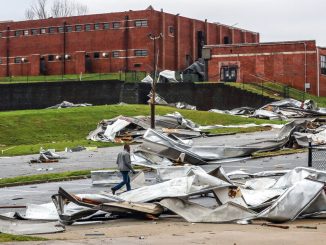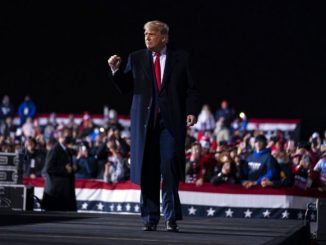
NAVAL STATION PEARL HARBOR, Hawaii—In his first major speech as Pentagon chief, Lloyd Austin on Friday called for developing a “new vision” for American defense in the face of emerging cyber and space threats and the prospect of fighting bigger wars.
Reflecting President Joe Biden’s promise to put diplomacy first in dealing with foreign policy problems, Austin said the military should provide leverage that diplomats can use to prevent conflict.
“U.S. military isn’t meant to stand apart, but to buttress U.S. diplomacy and advance a foreign policy that employs all of our instruments of national power,” Austin said.
He chose to spell out his ideas at Pearl Harbor, at the center of U.S. military power in the Indo-Pacific region, reflecting U.S. concerns that the Chinese communist regime’s rapid military modernization and growing aggression make it a powerful adversary. Notably, Austin in his speech did not explicitly mention China or North Korea.
In his first four-plus months as defense secretary, Austin has focused less on big policy pronouncements and more on immediate issues like the U.S. withdrawal from Afghanistan and internal issues like extremism in the military, as well as launching broad reviews of defense strategy.
Speaking with the USS Arizona Memorial and the Battleship Missouri Memorial in the background, Austin cautioned that the U.S. military cannot be satisfied with believing it is the strongest and most capability military in the world today—“not at a time when our potential adversaries are very deliberately working to blunt our edge.” He appeared to be referring to the Chinese regime, which other officials say has accelerated its military modernization and sped up its construction of a wide range of sophisticated weaponry while the United States was focused for two decades on combatting terrorist groups like al-Qaida in Afghanistan and, more recently, ISIS in Iraq and Syria.

Austin, who spent more than 40 years in the Army, including as the top American commander in Iraq during the last years of U.S. combat there, noted that he had spent most of the past two decades in “the last of the old wars.”
“The way that we fight the next major war is going to look very different from the way that we fought the last ones,” he said. “We all need to drive toward a new vision of what it means to defend our nation.”
He spoke at a ceremony marking the arrival of Adm. John Aquilino as the new commander of U.S. Indo-Pacific Command, succeeding Adm. Philip Davidson, who has been outspoken in his concerns that the Chinese regime is proceeding with urgency to be in position to potentially take Taiwan by force within several years.
In his departing remarks at Friday’s ceremony, Davidson repeated his assertion that the Chinese regime is using “pernicious” behavior to challenge U.S. dominance in the region and to remake the international order in its image.
Austin mentioned no specific potential flashpoints for conflict in the Indo-Pacific region but said the United States must develop a new vision of defense that takes greater advantage of new technologies, including quantum computing, artificial intelligence, and edge computing, which he described as a framework that allows data to be processed while it’s being collected, and to absorb and share it instantaneously.
Austin said U.S. defense will continue to rest on maintaining deterrence, which he described as “fixing a basic truth within the minds of our potential foes: The costs and risks of aggression are out of line with any conceivable benefit.”
To keep that deterrent effect, the U.S. military must use existing capabilities, develop new ones, and use all of them in new and networked ways—“hand in hand with our allies and partners.” This should be accomplished in alignment with U.S. diplomatic goals and efforts, he added, in order to prevent conflict from breaking out in the first place.
“It’s always easier to stamp out a small ember than to put out a raging fire,” he said.
By Robert Burns





Be the first to comment